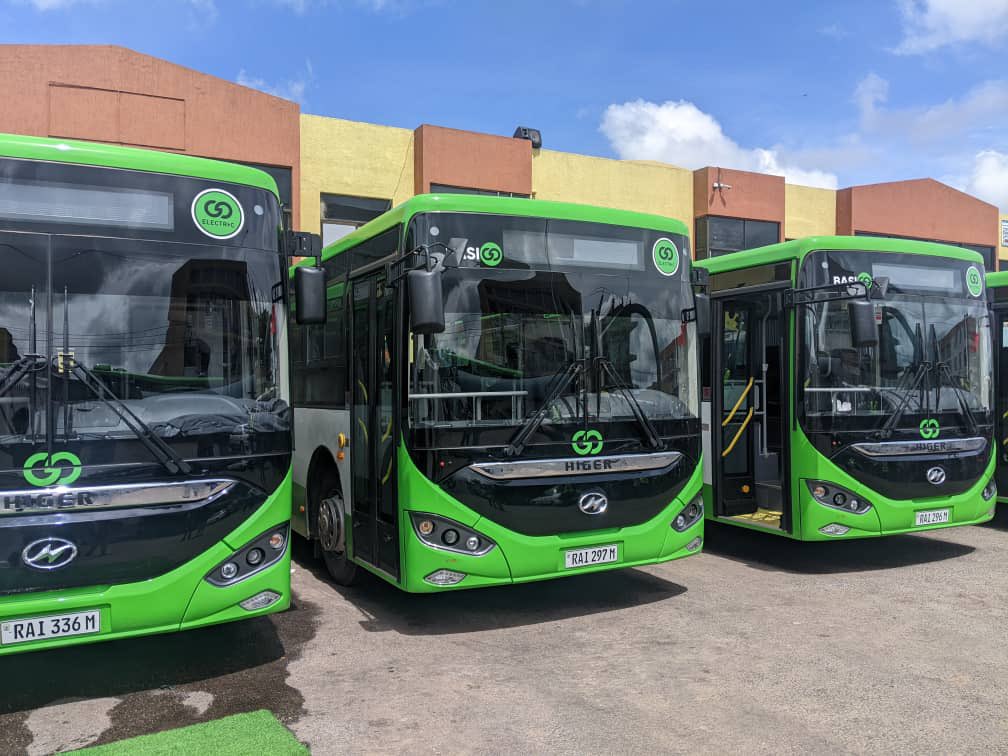A Growing Revolution and a Growing Question
Kigali’s skyline is changing. Electric buses are rolling out across the city, marking Rwanda’s push toward a cleaner and more sustainable transport system. Companies like BasiGo and IZI are scaling up operations, turning Rwanda into one of East Africa’s most ambitious adopters of electric mobility.
But as the fleet grows, one critical question looms: Can Rwanda’s electricity grid handle the load?
Behind every charging cable lies a hidden pressure point rising peak demand, limited generation margins, and an infrastructure that must evolve fast to keep the wheels turning.
Rwanda’s Power Demand Is Rising Fast
Rwanda’s installed generation capacity now stands at over 400 MW, but peak demand in 2024 already reached about 230 MW leaving little headroom for new loads like mass EV charging.
According to projections, Kigali’s peak electricity demand could rise by 64% by 2030, even without large-scale electric vehicle adoption. Introducing thousands of EVs could multiply the number of overloaded lines if charging is uncoordinated.
Without intervention, the grid could face power quality issues, local transformer failures, and higher electricity tariffs passed down to consumers.
How Electric Buses Are Changing the Energy Equation
Electric buses are energy-intensive. A single 25-bus depot, like BasiGo’s facility at Rwandex, requires around 1 megawatt (MW) of charging power each night.
As more operators electrify their fleets, the cumulative demand could rival industrial consumption levels. Rwanda’s transport electrification could shift national electricity demand patterns, requiring both generation and distribution upgrades to avoid outages or voltage drops.
Still, this challenge also brings the opportunity to modernize the grid and attract green investment.
Also read: Kigali’s Transition to Compact Electric Motorbikes Yields Beyond Environmental Advantages.
Smart Solutions to Avoid Grid Overload
1. Smart Charging Systems
Smart charging is one of the most effective strategies. By scheduling charging during off-peak hours or using algorithms to stagger loads, Kigali can reduce network stress.
Studies show that smart charging can cut transformer overloads by double-digit percentages, making it a key short-term fix.
2. Solar and Battery Integration
Integrating solar panels and battery storage at bus depots can offset grid dependence. Midday solar generation can charge buses while easing the evening load when households consume most power.
3. Time-of-Use Tariffs
Cost-reflective electricity tariffs can incentivize bus operators to charge during low-demand periods. This aligns with Rwanda’s efforts to build a financially sustainable energy sector.
4. Infrastructure Upgrades
Substations and distribution lines around Kigali may need reinforcement. Pairing transport electrification with grid expansion plans ensures reliability for both commuters and households.
Economic and Human Impact
Electric buses promise clean air, quiet streets, and lower fuel imports but unreliable charging could paralyze daily life.
A grid under strain means commuter delays, interrupted business operations, and rising electricity prices.
Conversely, a coordinated transition could deliver substantial benefits:
- Millions saved annually in diesel imports
- Reduced carbon emissions and better air quality
- Job creation in renewable energy and maintenance sectors
The stakes are both economic and human affecting families, small businesses, and Rwanda’s image as a clean-tech hub.
Financing the Transition: Green Bonds and PPPs
Rwanda is already building a reputation for green finance innovation.
Through green bonds, climate funds, and public-private partnerships, the government can mobilize capital for both vehicles and infrastructure.
Green investors and development banks are showing growing interest in e-mobility-linked energy projects, especially those combining solar, storage, and smart charging.
These instruments not only fund upgrades but also attract foreign direct investment into Rwanda’s renewable energy ecosystem.
Lessons for Africa: Getting the Sequence Right
Rwanda’s electric bus revolution offers a blueprint for other African cities but success depends on timing and integration.
Transport and energy planning must move hand in hand. The sequence is crucial:
- Map out depot charging needs
- Upgrade grid infrastructure
- Deploy smart charging and renewables
- Roll out buses in sync with capacity
If Rwanda gets this right, Kigali could become Africa’s model for sustainable e-mobility proving that green innovation and reliable power can coexist.
Also read: How Kabisa’s Ultrafast Charging Hub in Kigali Cuts Charging Time by 10x for EV Fleets
FAQs
1. What challenges does Rwanda face in powering its electric bus fleet?
Rwanda’s main challenge lies in its limited grid capacity. The country’s power generation is around 400 MW, but peak demand already exceeds 230 MW. As more electric buses are introduced, simultaneous charging could strain transformers and overload distribution lines especially in urban centers like Kigali.
2. How much electricity does an electric bus use in Rwanda?
A standard electric bus consumes between 150–200 kWh per day, depending on route length and terrain. A 25-bus fleet like BasiGo’s Kigali depot can require 1 megawatt (MW) of charging power daily, roughly equal to powering hundreds of homes.
3. Can Kigali’s grid handle increased electric vehicle demand?
Not yet at least not without smart charging systems, solar integration, and grid upgrades. Studies suggest that Kigali’s peak electricity demand could rise 64% by 2030, meaning EV expansion must be matched with infrastructure planning to avoid brownouts or costly upgrades later.
4. How can Rwanda prevent grid overload from electric buses?
Rwanda can prevent grid overload through:
- Smart charging: scheduling depot charging during off-peak hours
- Solar + battery integration: reducing grid dependence
- Cost-reflective tariffs: encouraging efficient charging habits
- Infrastructure upgrades: reinforcing substations and distribution lines
These combined solutions can make e-mobility sustainable without destabilizing the grid.
5. Are there renewable energy solutions to support Rwanda’s e-mobility goals?
Yes. Integrating solar power and battery storage at bus depots can ease pressure on the national grid. Rwanda’s high solar potential allows charging buses with renewable energy during the day, creating a cleaner and more reliable transport system.
6. How is the Rwandan government supporting electric mobility?
The Rwandan government has introduced an e-mobility policy framework offering incentives such as tax exemptions on EVs and components, and partnerships with private firms like BasiGo and IZI. It is also encouraging green bond financing and public-private partnerships (PPPs) to fund energy infrastructure upgrades.
7. What are the economic benefits of electric buses in Rwanda?
Electric buses can:
- Cut fuel import costs by millions annually
- Lower public transport fares through cheaper operating costs
- Reduce air pollution and improve public health
- Create green jobs in energy, transport, and maintenance sectors
Over time, these benefits can strengthen Rwanda’s economy and reduce reliance on fossil fuels.
8. What happens if Rwanda’s grid fails to adapt to e-mobility?
If upgrades and smart systems lag behind EV adoption, Rwanda risks power shortages, increased tariffs, and unreliable transport services. Grid strain could also slow private investment in the sector underscoring the need for early coordination between energy and transport planners.
9. How can investors participate in Rwanda’s electric mobility transition?
Investors can engage through:
- Green bonds and sustainability-linked loans
- Public-private partnerships (PPPs) for charging and grid upgrades
- Direct investments in renewable energy, solar storage, and EV infrastructure
These mechanisms help de-risk large-scale electrification while offering long-term sustainable returns.
10. What lessons can other African cities learn from Rwanda?
Rwanda shows that ambition must meet energy planning. Other African cities can learn to:
- Align grid expansion with transport electrification
- Use smart charging and solar integration early
- Finance through green instruments and partnerships
- Build local capacity for EV maintenance and energy management



